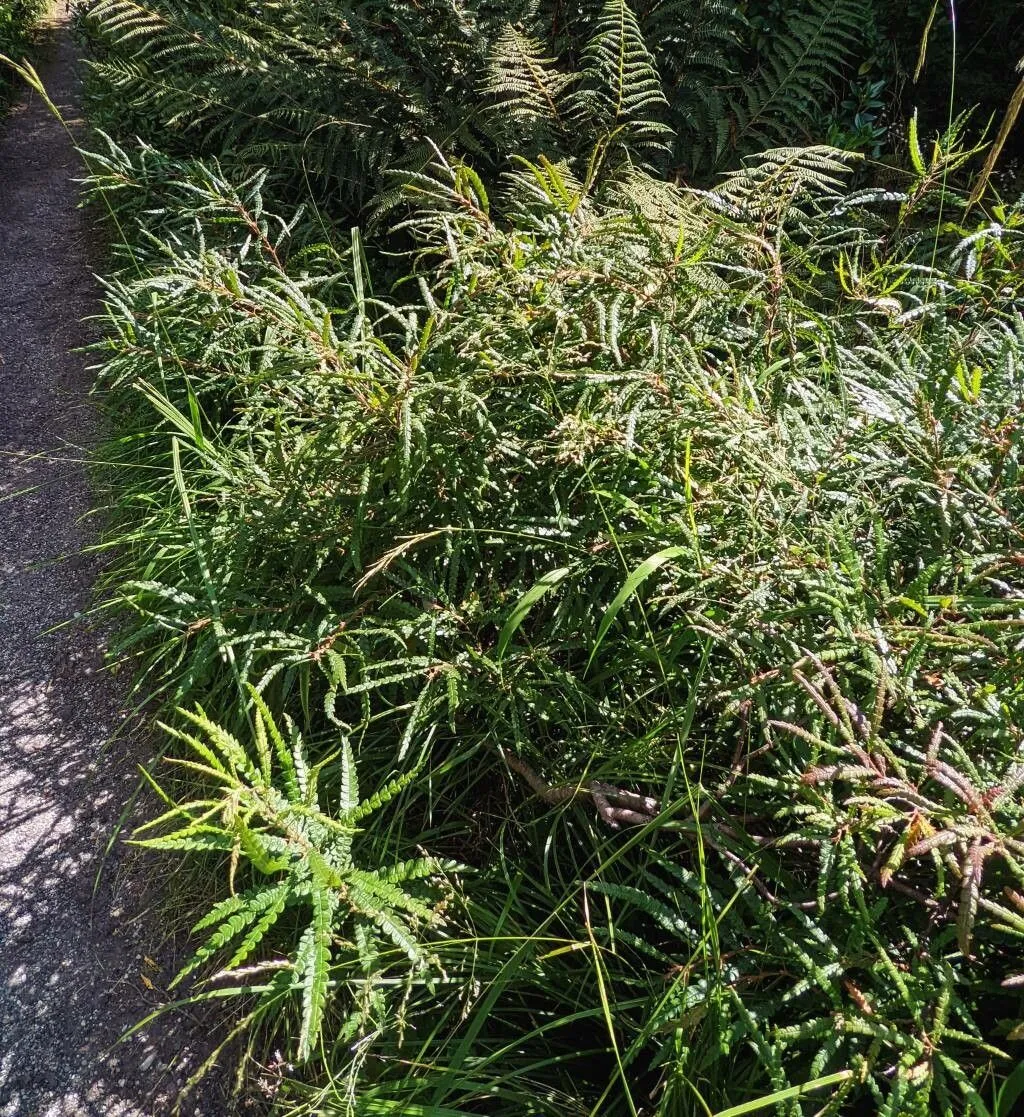
Author: (L.) Coult.
Bibliography: Mem. Torrey Bot. Club 5: 127 (1894)
Year: 1894
Status: accepted
Rank: species
Genus: Comptonia
Vegetable: Unknown
Observations: E. Canada to NC. & E. U.S.A.
Sweet fern, scientifically known as Comptonia peregrina, is a unique and interesting plant famed for its aromatic foliage and attractive appearance. Despite its common name, sweet fern is not a true fern but rather a member of the Myricaceae family. This deciduous shrub is native to Eastern Canada, extending its range down to North Carolina in the United States, making it a common presence in various parts of Eastern North America.
First described and classified by (L.) Coult. in the botanical literature “Mem. Torrey Bot. Club” in 1894, sweet fern has intrigued botanists and nature enthusiasts alike. One of the plant’s most distinctive features is its intricate, fragrant leaves which resemble those of a fern, contributing to its common name. These leaves emit a delightful aroma when crushed, a characteristic that has made sweet fern popular in natural and cultivated landscapes.
Sweet fern typically grows in a variety of settings, including dry and sandy soils where it often forms dense thickets. Its ability to thrive in such conditions makes it an excellent plant for soil stabilization on slopes and disturbed sites. The plant’s adaptability and resilience are complemented by its symbiotic relationship with nitrogen-fixing bacteria, enhancing soil fertility and benefiting neighboring plants.
Apart from its ecological benefits, sweet fern has been used historically in traditional medicine by Indigenous peoples and early settlers. Its leaves were often used to brew a pleasant tea believed to alleviate various ailments, ranging from respiratory issues to digestive troubles. Today, sweet fern continues to be appreciated not only for its medicinal properties but also for its ornamental value and contribution to biodiversity.
Whether admired for its aesthetic appeal, cherished for its fragrant leaves, or valued for its ecological roles, sweet fern stands out as a remarkable plant with a rich history and an important place in the natural landscapes of Eastern North America.
Pol: komptonia amerykańska
Eng: sweet fern, sweet-fern, sweetfern, fern-gale
Swe: bräkenpors
Fra: comptonie voyageuse, comptonie à feuilles d’asplénie
En: Sweet fern, Sweetfern, Sweet-fern, Fern-gale
Hr: Komptonija
Cs: Postopčák cizí
Da: Almindelig Bregnepors
Fi: Tuoksumyrtti
Fr: Comptonie voyageuse, Comptonie à feuilles d’asplénie
De: Farnmyrte
Oj: Gibaime’nûagwûs, Gibaime’nûna’gwûs, Kba’ange-minš
Pl: Komptonia amerykańska
Sr: Slatka paprat
Sv: Bräkenpors
Taken May 18, 2021 by Jessica Higgins (cc-by-sa)
Taken Aug 12, 2022 by manuseitz (cc-by-sa)
Taken Sep 30, 2022 by manuseitz (cc-by-sa)
Taken Aug 12, 2022 by manuseitz (cc-by-sa)
Taken Aug 12, 2022 by manuseitz (cc-by-sa)
Taken Sep 30, 2022 by manuseitz (cc-by-sa)
Taken Sep 21, 2021 by Katryna Rokicki (cc-by-sa)
Taken Sep 7, 2022 by Kai Best (cc-by-sa)
Taken May 18, 2021 by Jessica Higgins (cc-by-sa)
Taken Aug 12, 2022 by manuseitz (cc-by-sa)
Taken Sep 30, 2022 by manuseitz (cc-by-sa)
Taken Sep 30, 2022 by manuseitz (cc-by-sa)
Taken Aug 12, 2022 by manuseitz (cc-by-sa)
Taken May 18, 2021 by Jessica Higgins (cc-by-sa)
Family: Myrtaceae Author: (F.Muell.) K.D.Hill & L.A.S.Johnson Bibliography: Telopea 6: 402 (1995) Year: 1995 Status:…
Family: Rubiaceae Author: Pierre ex A.Froehner Bibliography: Notizbl. Bot. Gart. Berlin-Dahlem 1: 237 (1897) Year:…
Family: Sapindaceae Author: Koidz. Bibliography: J. Coll. Sci. Imp. Univ. Tokyo 32(1): 38 (1911) Year:…
Family: Asteraceae Author: A.Gray Bibliography: Pacif. Railr. Rep.: 107 (1857) Year: 1857 Status: accepted Rank:…
Family: Fabaceae Author: Medik. Bibliography: Vorles. Churpfälz. Phys.-Ökon. Ges. 2: 398 (1787) Year: 1787 Status:…
Family: Aspleniaceae Author: (Cav.) Alston Bibliography: Bull. Misc. Inform. Kew 1932: 309 (1932) Year: 1932…